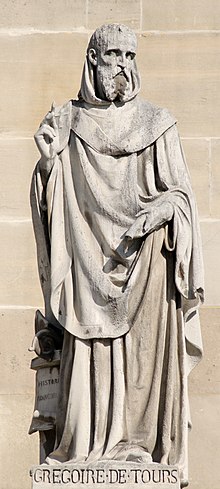573
Appearance
(Redirected from AD 573)
| Millennium: | 1st millennium |
|---|---|
| Centuries: | |
| Decades: | |
| Years: |
| 573 by topic |
|---|
| Leaders |
| Categories |
| Gregorian calendar | 573 DLXXIII |
| Ab urbe condita | 1326 |
| Armenian calendar | 22 ԹՎ ԻԲ |
| Assyrian calendar | 5323 |
| Balinese saka calendar | 494–495 |
| Bengali calendar | −21 – −20 |
| Berber calendar | 1523 |
| Buddhist calendar | 1117 |
| Burmese calendar | −65 |
| Byzantine calendar | 6081–6082 |
| Chinese calendar | 壬辰年 (Water Dragon) 3270 or 3063 — to — 癸巳年 (Water Snake) 3271 or 3064 |
| Coptic calendar | 289–290 |
| Discordian calendar | 1739 |
| Ethiopian calendar | 565–566 |
| Hebrew calendar | 4333–4334 |
| Hindu calendars | |
| - Vikram Samvat | 629–630 |
| - Shaka Samvat | 494–495 |
| - Kali Yuga | 3673–3674 |
| Holocene calendar | 10573 |
| Iranian calendar | 49 BP – 48 BP |
| Islamic calendar | 51 BH – 50 BH |
| Javanese calendar | 461–462 |
| Julian calendar | 573 DLXXIII |
| Korean calendar | 2906 |
| Minguo calendar | 1339 before ROC 民前1339年 |
| Nanakshahi calendar | −895 |
| Seleucid era | 884/885 AG |
| Thai solar calendar | 1115–1116 |
| Tibetan calendar | 阳水龙年 (male Water-Dragon) 699 or 318 or −454 — to — 阴水蛇年 (female Water-Snake) 700 or 319 or −453 |

Year 573 (DLXXIII) was a common year starting on Sunday of the Julian calendar. The denomination 573 for this year has been used since the early medieval period, when the Anno Domini calendar era became the prevalent method in Europe for naming years.
Events
[edit]By place
[edit]Byzantine Empire
[edit]- Byzantine–Sassanid War: Persian forces under the command of King Khosrau I capture the Byzantine stronghold of Dara, after a six-month siege. Meanwhile, a smaller Persian army under Adarmahan advances from Babylon through the desert, crosses the Euphrates River and ravages Syria. The cities of Apamea and Antiochia are plundered.[1]
Europe
[edit]- King Sigibert I goes to war against his half brother Chilperic I of Neustria at the urging of his wife, Brunhilda. He appeals to the Germans on the right bank of the Rhine for help, and they obligingly attack the environs of Paris and Chartres.
- The Lombards again raid Southern Gaul, but are defeated by the Franks under Mummolus, patricius and son of the Gallo-Roman count of Auxerre, and are driven out.
- King Cleph completes the Lombard conquest of Tuscany (Central Italy) and extends his dominion to the gates of Ravenna.
- Sigibert I appoints Gregory to succeed his mother's cousin, Eufronius, as bishop of Tours (approximate date).
Britain
[edit]- The Battle of Arfderydd is fought between Gwenddoleu ap Ceidio and the sons of Eliffer, Gwrgi and Peredur. The forces of Gwenddoleu are killed, and Myrddin Wyllt goes mad watching this defeat (according to the Annales Cambriae).
By topic
[edit]Religion
[edit]- Pope John III is forced by the Lombards to retire from Rome, and takes up residence at the Catacombs along the Via Appia (approximate date).
Births
[edit]- Abu Bakr, Muslim Caliph (approximate date)
- Chen Yin, crown prince of the Chen dynasty
- Dou Jiande, general of the Sui dynasty (d. 621)
- Jing Di, emperor of Northern Zhou (d. 581)
- Lupus of Sens, French bishop (approximate date)
Deaths
[edit]- June 11 – Emilian of Cogolla, Iberic saint (b. 472)
- Brendan of Birr, Irish abbot (approximate date)
- Gwenddoleu ap Ceidio, Brythonic king
- Narses, Byzantine general (b. 478)
- Wang Lin, Chinese general (b. 526)
References
[edit]- ^ Greatrex & Lieu 2002, pp. 146–149, 150
- Bibliography
- Greatrex, Geoffrey; Lieu, Samuel N. C. (2002). The Roman Eastern Frontier and the Persian Wars (Part II, 363–630 AD). New York, New York and London, United Kingdom: Routledge (Taylor & Francis). ISBN 0-415-14687-9.
